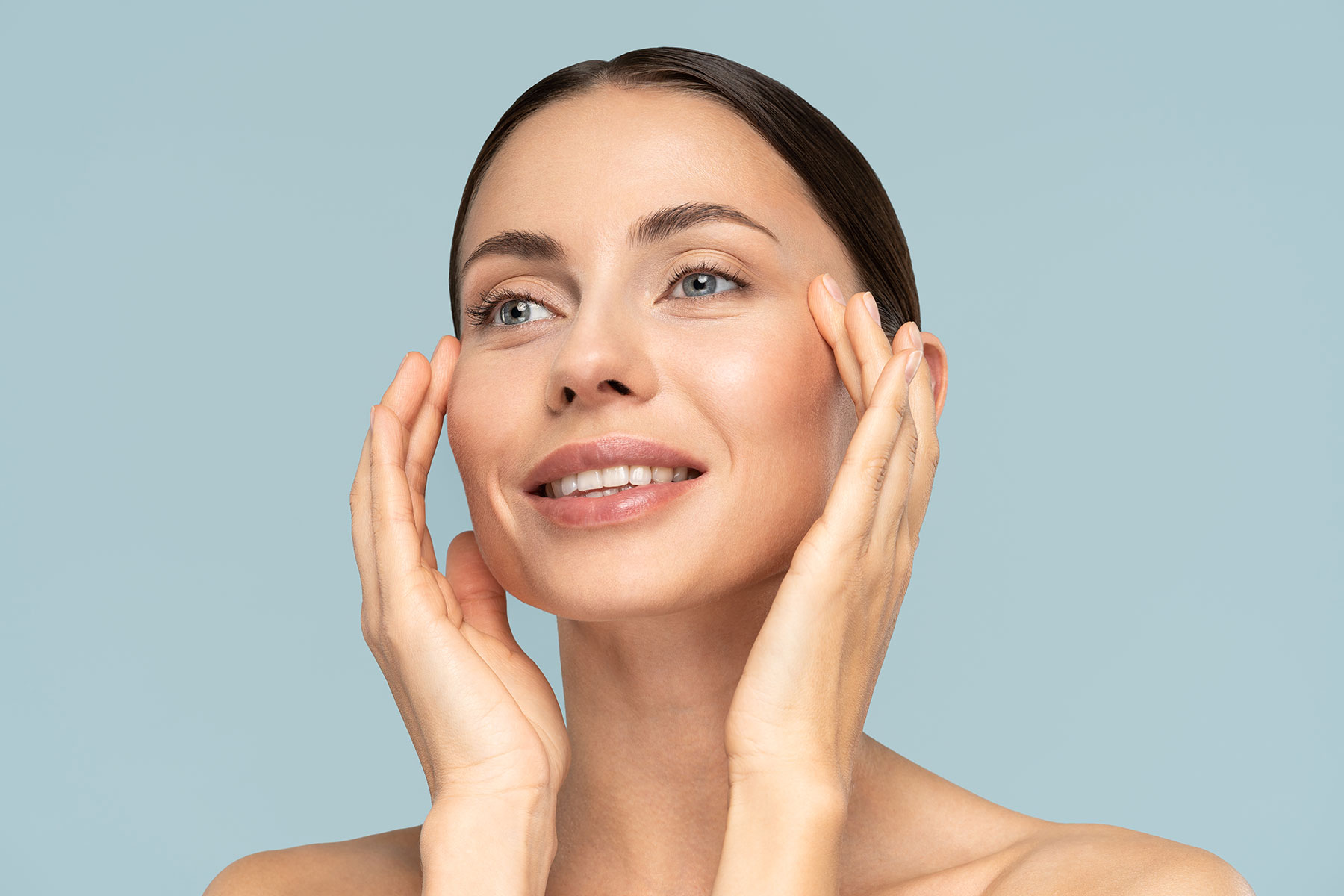
Are you a candidate for lower eyelid blepharoplasty?
Do you suffer from eye bags that make you look older and more tired than you feel? Thanks to the loss of fat, collagen and thinning skin that come with getting older, eye bags are one of the most common and natural signs of aging. The good news is that though many people develop eye bags as they age, not everyone has to suffer needlessly. Read on to see if you are a candidate for lower eyelid surgery, also known as blepharoplasty.
What is lower blepharoplasty?
Blepharoplasty is an umbrella term for surgery concerning the eyelids. Generally speaking, upper blepharoplasty is a surgical procedure in which excess skin is removed from the upper eyelid; lower blepharoplasty is a surgical procedure that targets the lower eyelid and under-eye area to reduce bagginess. Blepharoplasty can also sometimes be referred to as an “eyelid lift”.
Why get blepharoplasty?
It is part of the natural aging process that as people get older, many experience sagging skin or “bags” under their eyes caused by prolapsed eye socket fat, puffy or droopy lower eyelids and loose skin. These can have the undesirable effect of making one look perpetually tired, angry and older than they are. Lower blepharoplasty will cure these effects of aging, resulting in a refreshed, younger look without completely changing one’s appearance.
That said, if you are looking for a more extensive improvement of your appearance, a lower blepharoplasty is often performed in conjunction with other procedures such as upper blepharoplasty, brow lift or complete facelift. It is also common to have blepharoplasty done alongside chemical peels or laser resurfacing, and other non-invasive rejuvenating procedures. There are many possibilities depending on your desired results–your doctor can advise you on your best course of action.
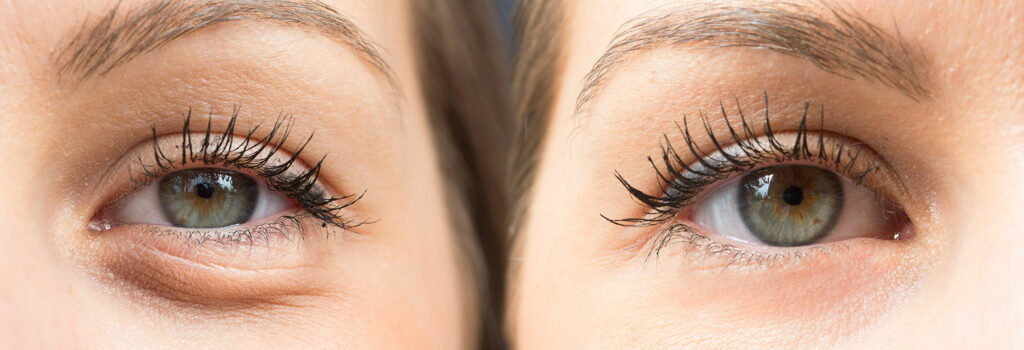
What conditions does blepharoplasty not treat?
Blepharoplasty does not address milder signs of aging such as dark circles, crows feet, laugh lines and wrinkles. These should be treated with other procedures such as filler injections, chemical peels or laser resurfacing, and forehead lifts.
What should I expect before, during, and after surgery?
Before:
Before you even make an appointment for lower blepharoplasty, it is necessary to have a consultation with your surgeon. At Amadi Aesthetics, you will meet with Dr. Amadi and he will go over your medical history and examine your symptoms to devise a plan tailored specifically to you. There are many factors that he will take into account while deciding on the best approach including how your symptoms present themselves and your medical history.
Lower blepharoplasty, which Dr. Amadi most commonly performs with fat repositioning technique instead of a “subtractive” fat removal technique, is a more complex and technically more challenging procedure than upper blepharoplasty. The appearance of the lower eyelids may be compromised by prolapsed fat, stretched-out eyelid muscle and skin. Cheek descent and volume loss can worsen this appearance by creating a groove below the eyelid, often termed the “tear trough.” Swelling in the cheek/eyelid transition zone, termed “festoons,” can further complicate treatment. If skin creping or festoons are present, laser resurfacing or a chemical peel can be performed to smooth and tighten the lower lid skin.
Dr. Amadi will take all of these factors into consideration when deciding what approach is best for you.
During:
There are two main approaches to lower blepharoplasty: transconjunctival and transcutaneous.
Transconjunctival:
If your condition requires fat to be repositioned this will be done using the transconjunctival method, which is performed through an incision hidden on the inside surface of the lower eyelid. Portions of the fat pads beneath the eyes–to blame for the under-eye bags–are then repositioned into the hollow area at the transition zone from eyelid to cheek (tear trough) through this incision. If necessary, due to an over-abundance of fat, the residual fat can be excised or shrunk down with cautery. Because the small incision is made on the interior of the eyelid and the edges of the laceration are touching, there is no need for sutures. The incision usually heals within 3-5 days internally and there is no visible scar. This method produces natural-looking results.
Transcutaneous:
If removing skin and tightening muscle is planned as part of your treatment, this will be done using the transcutaneous method.
During the transcutaneous approach, an incision is made 1-2 mm below the lower lashline (subciliary), allowing the muscles of the lower lid to be tightened and creating space to trim and reposition excess skin and fat. This approach is better for more soft tissue alterations and addressing skin laxity or excess than the transconjunctival, however, it is more invasive, with the uncommon side effect of lower eyelid retraction, so Dr. Amadi is quite selective in choosing this option.
Both transconjunctival and transcutaneous blepharoplasty can be performed under either general or local anesthesia, depending on if it is being done as an isolated surgery or in conjunction with other procedures.
After/Recovery:
After your procedure, you will experience bruising and swelling and possibly overactive tear production; to minimize these symptoms, you should keep your upper body elevated for several days, especially when sleeping. You can also help minimize bruising and swelling by using “compression goggles” or alternatively applying cold compresses to your eyes for 24-48 hours following your operation. The eyelid surgery almost never requires bandages so your vision is not obstructed, unless applying compression “LidLift” goggles.
You may also experience blurred vision and swelling at the corners of the eyes, but this is temporary and will usually subside in a few days of when use of eye ointment is stopped.
After undergoing lower blepharoplasty, you should be able to return to regular activity and light exercise in as little as 7-10 days, however with fat repositioning technique, Dr. Amadi does not recommend jumping/running for 1 month. An elliptical machine or exercise bike is allowed. Bruising should subside within this time but swelling can last for weeks and in some extreme cases, months.
You will see an immediate change in your appearance after your procedure, with full results visible once swelling subsides. While the results from upper blepharoplasty usually last between 5-10 years, results from lower eyelid surgery for eyelid bags are virtually permanent.
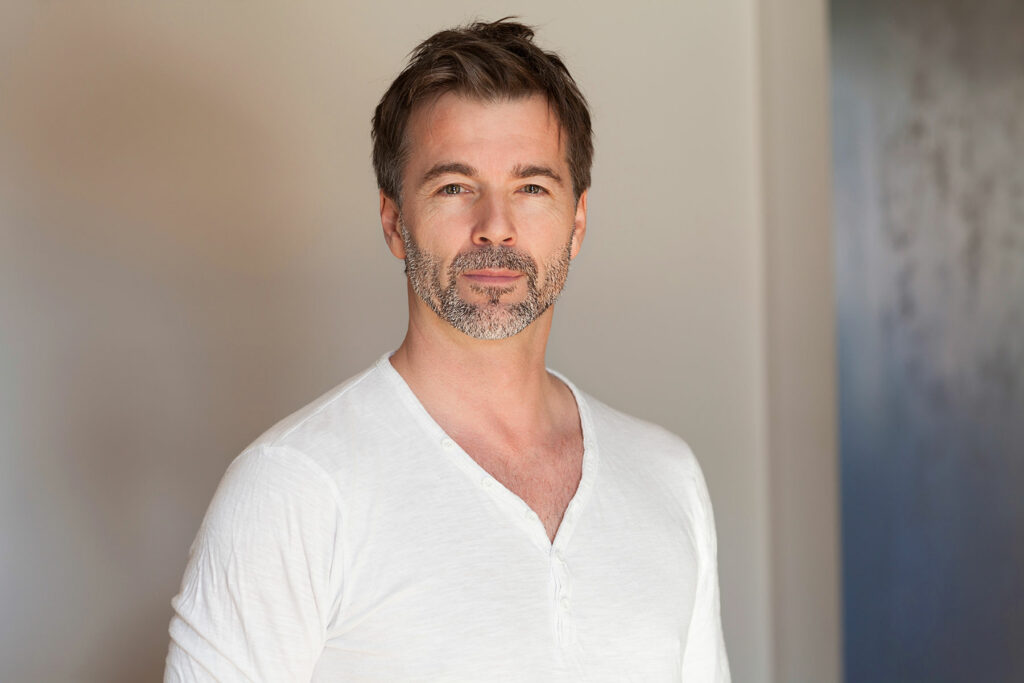
Risks
During your pre-operative evaluation, Dr. Amadi will discuss with you all of the potential risks and complications. As with any surgical procedure, there are risks, but these are diminished significantly when performed by capable, experienced hands.
The most common complications (though minor and rare) are swelling, ecchymosis (skin discoloration resulting from bleeding beneath the skin), chemosis (swelling of the tissues of the inner eyelid and covering of white of the eye), and lagophthalmos (inability to completely close the eye).
The best way to avoid any complications with your procedure is to closely follow pre-and-post-operative care as outlined by your doctor. And again, this cannot be stressed enough, complete honesty with your surgeon about any and all medications and medical conditions.
Am I a candidate?
Candidates for lower blepharoplasty are in general overall good health. It is best for candidates to be non-smokers. Age isn’t necessarily a factor when it comes to blepharoplasty, however, most patients are over the age of 35 as this is generally when signs of aging begin to develop. As with any procedure, it is always important to be completely upfront with your surgeon about any medications you are taking or health conditions you may have as this can impact candidacy.
Lower Blepharoplasty Before and After
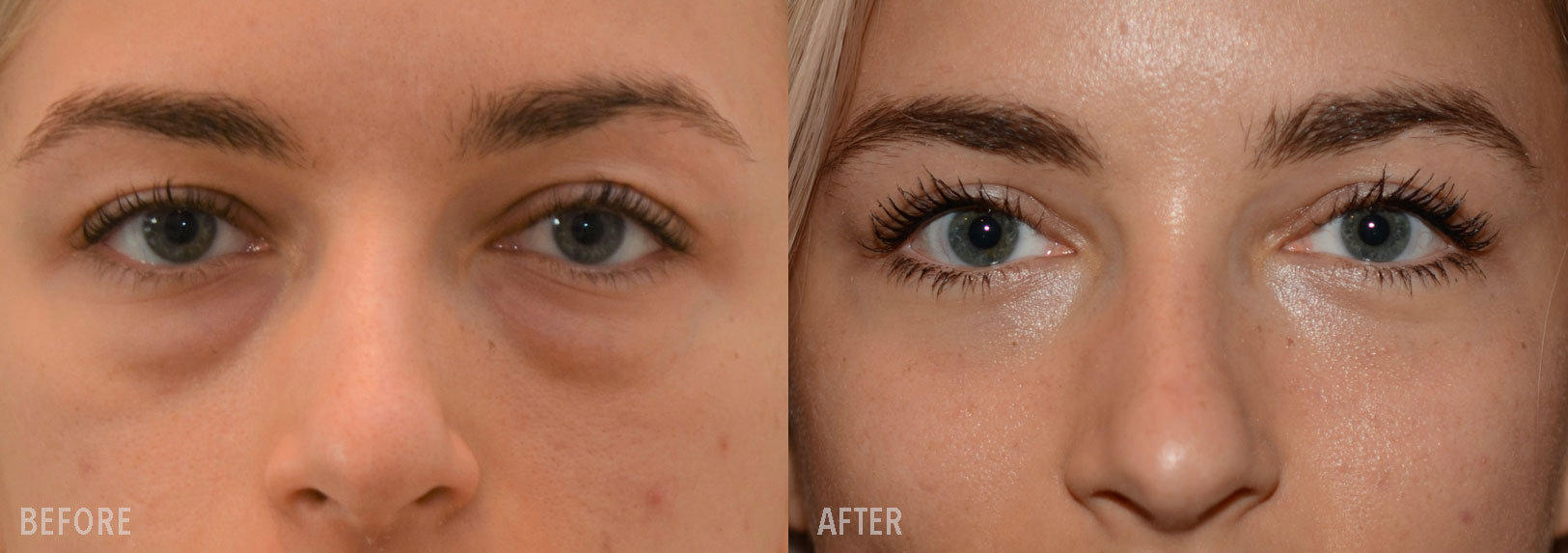
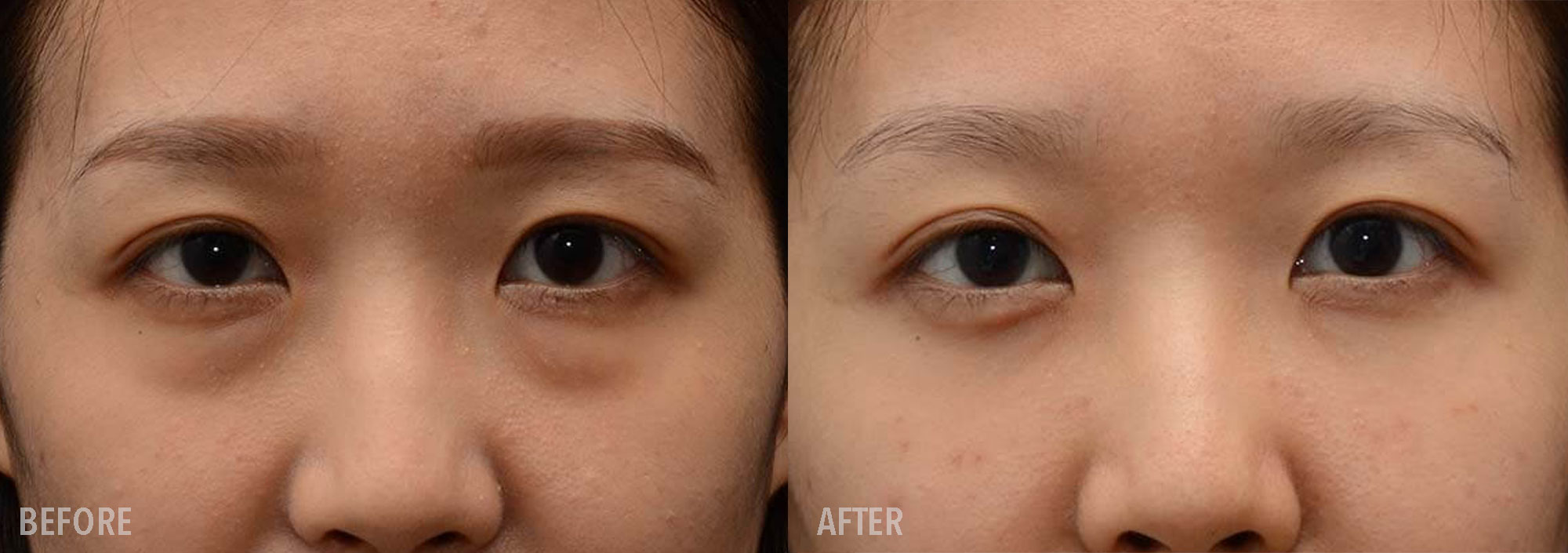
Click here to see more Before & After photos.
Conclusion:
Though lower blepharoplasty is one of the most commonly performed cosmetic surgeries today, it is still considered technically challenging and requires a comprehensive understanding of the anatomy of the eyelid. Because of the challenges involved and knowledge required, it is extremely important that you find a reputable surgeon with extensive experience such as Dr. Amadi.
Click to learn more about Blepharoplasty.
Amadi Plastic Surgery
Lorem ipsum dolor sit amet, consectetur adipiscing elit. In nec erat in nibh pellentesque vestibulum eget eu massa. Lorem ipsum dolor sit amet,